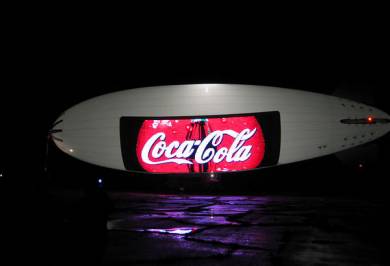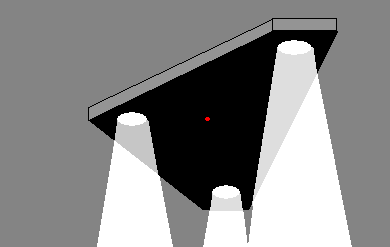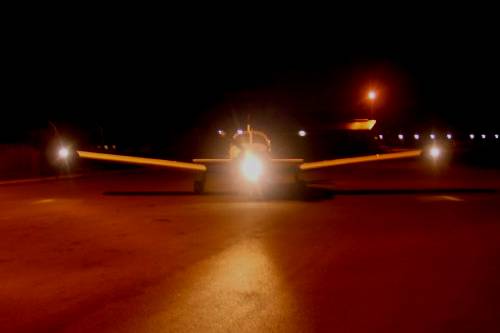Tim Printy is an amateur astronomer who introduces himself as a UFO debunker and published several web pages (at http://members.aol.com/TPrinty/UFO.html) in which he argues that all UFO sightings reports have mundane explanations, and that ufology is therefore pseudo-scientific garbage.
He has written an article on the Belgium UFO flap; which he reduced to two cases, that of the infamous multiple radar detection and visual sighting the night of March 30-31, 1990, and that of some of the events in the area of the city of Eupen on November 29, 1989, which were more or less initial of the subsequent wave.
The Eupen events are reduced to two of the observations of police officers Nicoll and von Montigny, reduced into one paragraph of 250 words describing, with much distortions and incomplete, of the initial episode with the triangular object hovering about a meadow, and the last episode with possibly the same object then lost from sight above the lake of Gileppe. The whole wealth of sightings reports is reduced to mentioning “in addition to this report, there were several others that night.” Actually, “several other” amounts to at least 30 sightings listed for that area and in the timeframe from 07:00 p.m. to 08:00 p.m., and much, much more if one considers the entire day!
The overall UFO wave is claimed to have last “the next six months”, another blatant error as anyone can check at the SOBEPS archive of in their two volumes of sightings summaries and papers: the wave did not stop after six months. It is this particularly amusing that Printy claims that SOBEPS only told “half of the tale.” As often, critics provide information on their own shortcomings when howling at others.
Although it is apparent even in his short summary of the episode that the explanations he indicates cannot apply, he attempts to allot the events to commonplace explanations.
It is apparent that Tim Printy has no clue and no solid information on the events, and as explanation, he simply believes one other UFO-skeptic, Wim Van Utrecht. He starts by telling that Van Utrecht investigated and determined that “the initial sighting of a lighted craft could easily have been a lighted blimp.”
No mention is done of the fact that Van Utrecht changed his mind repeatedly on the nature of the structured object: an ultralight plane, a blimp, and now a helicopter. That is, Van Utrecht no longer believes that UFO was a blimp, yet Printy still does.
A first complete distortion of the facts here is that the craft was not lighted. The craft was a dark silhouette, the light consisted in the three cones of lights projected vertically to the ground and lighting the area more than lighting of a football field. This has obviously nothing to do with a lighted blimp. Lighted blimps are lighted from the inside and the lighting principle is to illuminate the entire balloon envelope from the inside to create a massive visual effect.
The second distortion is to claim that the lighted blimp explanation is the result of an investigation. It is actually only a guess by Wim Van Utrecht, who never even talked to the witnesses; no lighted blimp circulated in the area. “Investigation” should have been used only if indeed a lighted blimp was identified or if at least the evidence of the lighted blimp were searched for; however, should a lighted blimp have flown in the area, Van Utrecht or any other UFO-Skeptic would have shouted the find all over the place. The fact is: UFO-Skeptics probably attempted to trace a lighted blimp, and failed to find any. If there was an investigation, it merely failed to track any lighted blimp or any other aircraft. This is discreetly suggested by Printy: “There appears to be only circumstantial evidence of this”, “this” being the lighted blimp. As a matter of fact, there are no evidence of lighted blimp whatsoever, and plenty of evidence that it could not have been a lighted blimp.

|
Above: A lighted blimp. It does not beam down cones of light.

|
Above: What Hubert Von Montigny and Heinrich Nicoll observed.
Another distortion example is that Tim Printy refers again to Wim Van Utrecht for a description of one final aspect of the sighting, saying that the witnesses “had the unclear impression that, every now and then, there were beams of light shooting out from the sides.” This is not at all an honest description of that last event. The so-called “impression” is actually quite different from that and Printy did not check it out at all, or deliberately chose to ignore it; probably because of his bias, he did not consider to be skeptic about other “skeptics” presentations of the case.
Probably not convinced himself of the advertising blimp theory, Printy then suddenly jumps to another explanation allotted to Van Utrecht, no question asked, no matter how. It is not formally stated, but it shows when Printy says “Van Utrecht points out, three white lights and a red flashing light are consistent with standard lighting configurations for aircraft.”
It is obvious that planes can show “three white lights and a red flashing light.” So, the lighted blimp is now forgotten, and enters a plane. But the question is actually not only to determine if three white lights and a red flashing lights are consistent with a plane's, but to determine whether a plane is consistent with the sighting.
It is not. A first issue is the noise. If the alleged plane's lights illuminated the meadow thee way the witnesses said, i.e., more light than that of a lighted football stadium, then this plane could not have been very high. Any sensible person can figure out that if a plane is some dozen meters from you and illuminates the ground that much, then you have to hear it.
Printy indicates that “witnesses did report noises similar to a blimp or low flying aircraft” but this is simply a third gross distortion of the facts. Of course, there are other sightings with other witnesses hearing airplane noises; however, what matters here is what the witness of this sighting heard. They heard complete silence.
Another difficulty, should I need to point it out, is that a plane does not stand stationary at low altitude in the air. Planes fall when they don't move, quite simply. This is why the blimp was first suggested, as it can hover, but the blimp does not fit other characteristics of the sighting, so Printy switches to the plane when he finds it convenient; which it is not.
And of course, when an airplane has three white landing lights on, these lights do not point vertically down at the ground, but to the front, as they are supposed to light the landing strip in front of the plane and not underneath it:

|
Compare with the lights on the observed object:

|
Again, this blimp/plane nonsense appears silly to any sensible person even by reading Printy's censored version of the sightings, it is of course pure nonsense if the real features of the sightings are looked at.
The rest of the Printy argument relies also on Van Utrecht and general considerations on UFO that do not apply here. Van Utrecht refers to ufologist Ian Hendry, as most UFO-Skeptics do. The trick is to avoid any discussion on the particulars of one sighting by referring to completely different sightings which Hendry claimed to have investigated and solved. It is of course not possible to me to list all the issues of Hendry's book here, it will be done elsewhere in due time (my demonstration is actually currently under review). I will simply provide some pointers here, while recommending to the reader to check Hendry's book for himself:
Printy uses Hendry for the same trick many UFO-Skeptics use too, including Wim Van Utrecht. “Hendry proved that people mistake Venus for a spaceship” thus Eupen's UFO was a blimp / plane / Venus / Ultralight / helicopter. This is a blatantly pseudo-scientific approach of UFO matters, it has nothing to do with genuine skepticism either.
Remember that Printy considered only two sighting of the entire Belgium flap. The sighting discussed here is grossly misrepresented on his website, where it appears “explained” only because the data is not correctly presented and because erroneous argumentation is used in a “clever” debunkery. People interested in the two policemen's sighting that night should no rely on Tim Printy and check into the matter much further. It is worth it.